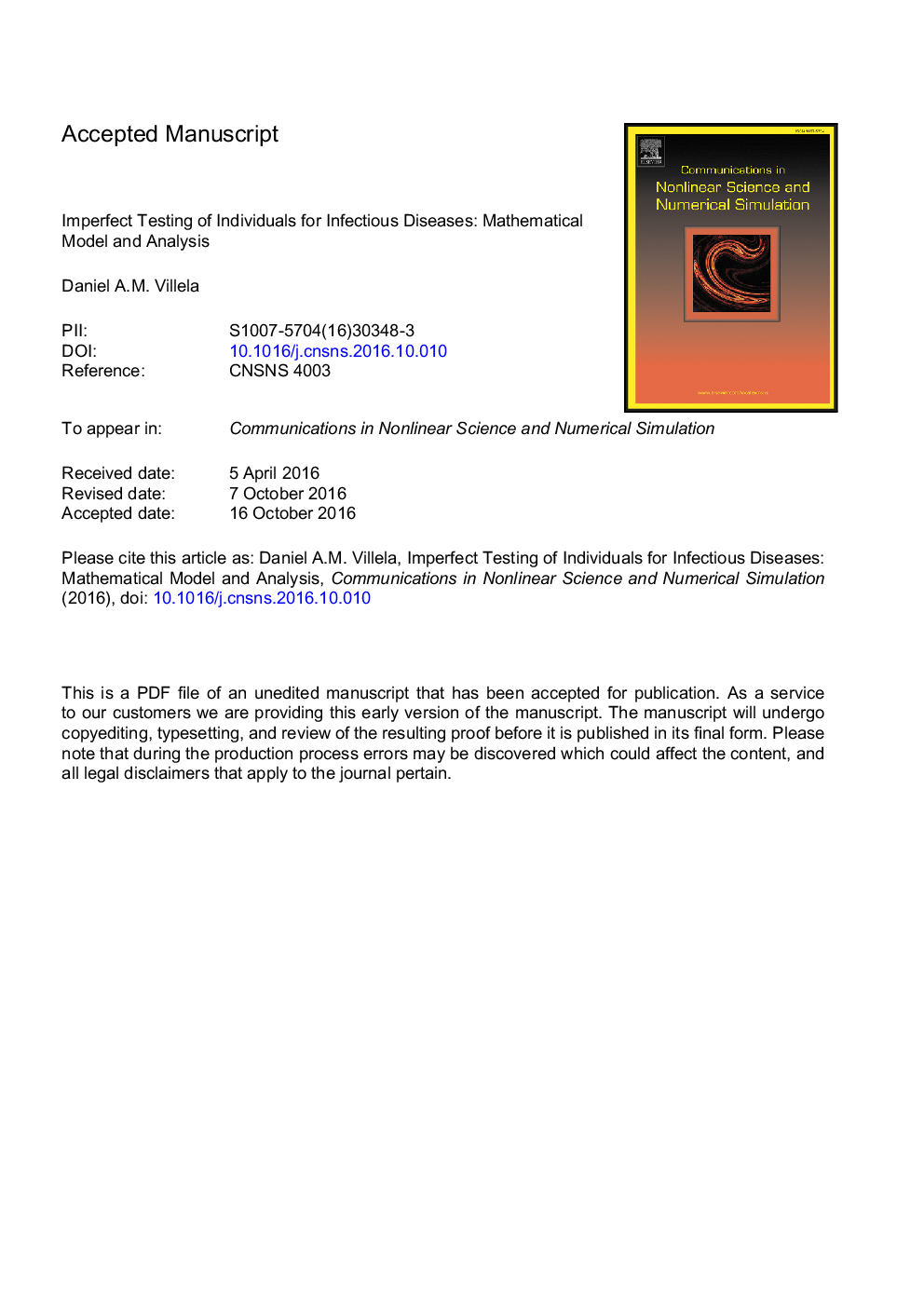| Article ID | Journal | Published Year | Pages | File Type |
|---|---|---|---|---|
| 5011509 | Communications in Nonlinear Science and Numerical Simulation | 2017 | 20 Pages |
Abstract
Testing symptomatic individuals for a disease permits health diagnostic units to effectively deliver treatment resources, if tests' results turn positive, which speeds up their treatment and might also decrease individuals' contacts to other ones. An imperfect test, however, might incorrectly consider susceptible individuals to be infected (false positives). In this case, testing reduces the epidemic in the expense of potentially misclassifying individuals. We present a mathematical model that describes the dynamics of imperfect testing and diagnostics for an infectious disease. Susceptible individuals turn to “susceptible but deemed infected” at a rate given by the test specificity. Infected individuals go to a state “infected and tested positive” at a rate given by the test sensitivity. Analysis of the model permits us to derive an expression for the basic reproduction number R0 and to find the conditions for reaching R0 < 1, in which case the disease-free equilibrium is stable. We also derive for a given sensitivity and specificity, the critical testing rate for reaching R0 < 1. We also present numerical results to cover interesting scenarios such as applying different sensitivity and specificity values to obtain the basic reproduction number R0 < 1. Finally, we devise a relative cost model to analyze the cost of testing rates.
Keywords
Related Topics
Physical Sciences and Engineering
Engineering
Mechanical Engineering
Authors
Daniel A.M. Villela,
